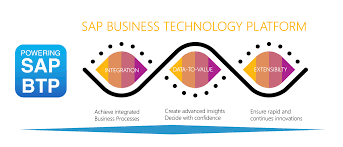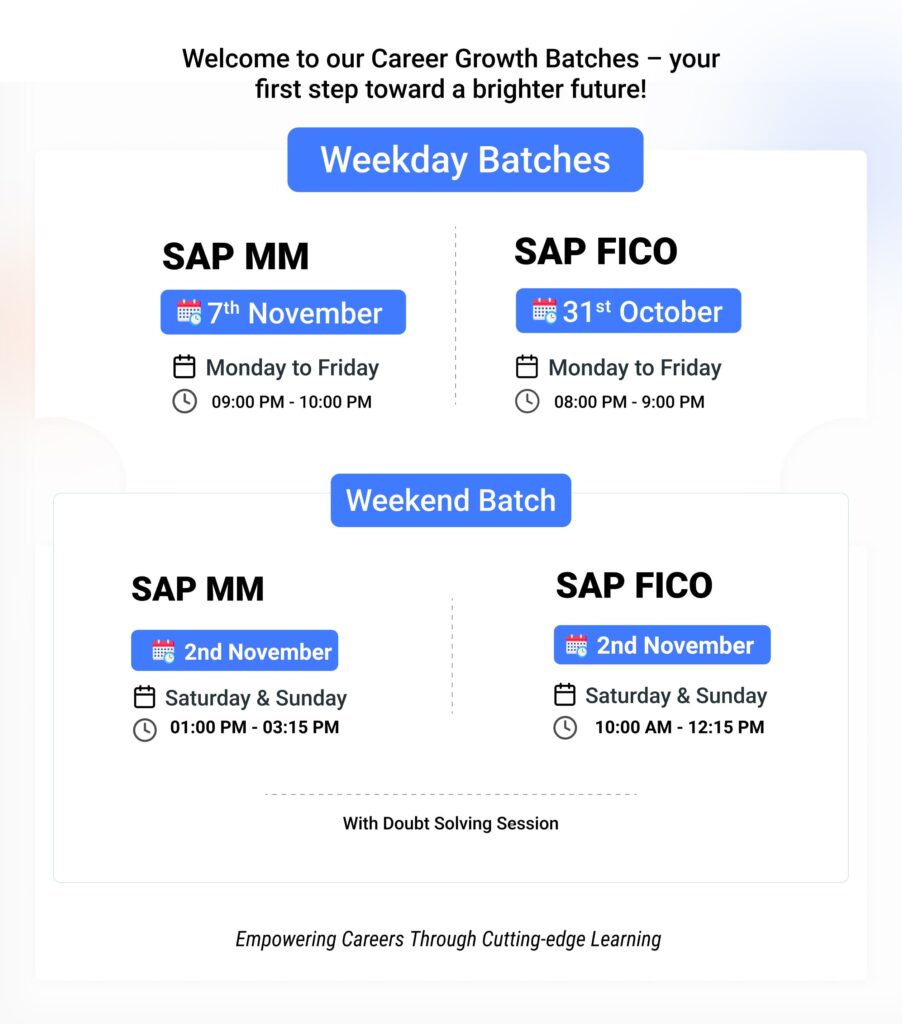What is SAP MM Module? Complete Guide for Beginners (2025)
In today’s fast-moving business world, companies depend on smart software systems to manage their operations efficiently. One such system that has changed the way organizations work is SAP (Systems, Applications, and Products in Data Processing). Among its many modules, the SAP MM module (Materials Management) plays a very important role in handling materials, inventory, and procurement.
If you have ever wondered “What is SAP MM module?” or “How does SAP MM work?”, this article will help you understand everything in easy and clear language.
Connect With Us: WhatsApp

SAP MM Full Form and Introduction
SAP MM stands for SAP Materials Management. It is one of the most important modules of SAP ERP (Enterprise Resource Planning) software. The main goal of SAP MM is to make sure that materials and goods are always available in the right quantity, at the right time, and at the right cost.
In simple terms, SAP MM helps businesses manage everything related to materials — from purchasing raw materials to managing stock, inventory, and suppliers. It ensures a smooth supply chain process and efficient production operations.
Example to Understand What is SAP MM Module
Let’s take an easy example.
Imagine a company that manufactures cars. To build one car, the company needs hundreds of materials — steel, glass, tires, engines, etc.
SAP MM helps this company manage:
-
Purchasing materials from the right vendor
-
Tracking stock levels in the warehouse
-
Creating purchase orders automatically
-
Recording goods received from suppliers
-
Handling invoices and payments
This whole process — from buying to payment — is managed through SAP MM. That’s why every large manufacturing or trading company uses SAP MM to save time, reduce errors, and cut unnecessary costs.
SAP MM Module Step-by-Step Process
The SAP MM process can be divided into several important steps. Here’s an easy explanation of each:
-
Requirement Determination – Identifying what materials or products are needed for production.
-
Source Determination – Finding the right supplier or vendor for purchasing the materials.
-
Vendor Selection – Choosing the best vendor based on quality, price, and delivery time.
-
Purchase Order Creation – Creating a document to order materials officially.
-
Goods Receipt – Recording the materials received from the supplier in the SAP system.
-
Invoice Verification – Checking and approving supplier invoices for payment.
-
Payment Processing – Paying vendors after successful verification.
These steps ensure the company always has the right materials at the right time without overstocking or shortage.
SAP MM Submodules
The SAP MM module includes several submodules, each focusing on a specific function:
-
Purchasing – Handles procurement activities like purchase orders and contracts.
-
Inventory Management – Manages stock quantities, movements, and storage.
-
Material Master Data – Stores all material-related information such as codes, descriptions, and units.
-
Vendor Master Data – Contains all details about suppliers and their performance.
-
Invoice Verification – Checks invoices before releasing payments.
-
Consumption-Based Planning (CBP) – Helps plan material needs based on past consumption.
Together, these submodules make SAP MM a complete solution for material and inventory control.
SAP MM Module Codes (Transaction Codes)
In SAP, every activity is performed using a Code (Transaction Code). Here are some popular SAP MM Codes that are often used by professionals:
-
ME21N – Create Purchase Order
-
ME51N – Create Purchase Requisition
-
MIGO – Goods Movement
-
MIRO – Enter Incoming Invoice
-
ME11 – Create Purchase Info Record
-
MB1A – Goods Withdrawal
-
ME31K – Create Contract
Learning these Tcodes helps you work faster and more efficiently in SAP.
SAP MM Syllabus and Learning Topics
If you are planning to learn SAP MM, here are the major topics included in the SAP MM syllabus:
-
Overview of SAP ERP and MM module
-
Organization structure and master data
-
Procurement process and purchase order management
-
Inventory management and goods movement
-
Pricing procedure and valuation
-
Invoice verification and account determination
-
Reports, Codes, and configuration
This syllabus covers both theoretical knowledge and hands-on practice, making it suitable for beginners and working professionals.
SAP MM Module PDF and PPT Resources
If you’re looking for SAP MM module PDF or SAP MM module PPT materials, these usually include step-by-step explanations, screenshots, and examples. Such resources are great for self-study and revision.
Many SAP training institutes, like GTR Academy, also provide study materials, notes, and real-time project examples for better understanding.
SAP MM Interview Questions
If you are preparing for a job interview, here are a few common SAP MM interview questions you should know:
-
What is the difference between a Purchase Requisition and a Purchase Order in SAP MM?
-
What are the major components of SAP MM?
-
What is the purpose of the Material Master Record?
-
How does inventory management work in SAP MM?
-
What is a movement type in SAP MM?
-
What are release procedures in purchase orders?
-
How is invoice verification done?
Practicing such questions helps you prepare confidently for interviews and certification exams.
Why Learn SAP MM?
Learning SAP MM offers great career opportunities. Almost every large company, especially in manufacturing, retail, and logistics, uses SAP MM for managing their supply chain.
Here are a few benefits of learning SAP MM:
-
High demand for certified professionals
-
Better job roles and salary packages
-
Opportunities in India and abroad
-
Strong foundation for careers in supply chain, procurement, and ERP systems
Learn SAP MM with GTR Academy
If you are looking for the best SAP MM training institute, GTR Academy is one of the top choices. The academy offers SAP MM online and classroom training, real-time project experience, expert trainers, and placement support for students.
GTR Academy provides:
-
Complete SAP MM syllabus coverage
-
Access to SAP practice servers
-
Step-by-step learning with examples and case studies
-
PDF and PPT learning materials
-
Guidance for SAP MM certification and interviews
Whether you’re a fresher or a working professional, learning SAP MM with GTR Academy can help you build a strong and rewarding career.
Top 10 FAQs About SAP MM Module
1. What is the SAP MM module?
SAP MM (Materials Management) is a key module in SAP ERP that helps businesses manage all activities related to materials, inventory, and procurement. It ensures that the right materials are available at the right time and cost.
2. What does SAP MM stand for?
The full form of SAP MM is SAP Materials Management. It deals with the process of purchasing, storing, and managing materials efficiently within an organization.
3. What are the main functions of SAP MM?
The main functions of SAP MM include procurement, inventory management, material valuation, and invoice verification. It also supports vendor management, purchase order processing, and material planning.
4. What is the use of SAP MM in a company?
SAP MM is used to automate and streamline the material management process — from purchasing goods to managing stock and verifying invoices. It helps companies maintain smooth supply chain operations and reduce material-related costs.
5. What are the important Codes in SAP MM?
Some commonly used SAP MM Codes include:
-
ME21N – Create Purchase Order
-
MIGO – Goods Movement
-
MIRO – Invoice Verification
-
ME51N – Create Purchase Requisition
6. What are the submodules of SAP MM?
The SAP MM module includes several submodules like:
-
Purchasing
-
Inventory Management
-
Material Master Data
-
Vendor Master Data
-
Invoice Verification
-
Consumption-Based Planning (CBP)
7. What is the SAP MM step-by-step process?
The SAP MM process typically follows these steps:
-
Requirement determination
-
Source and vendor selection
-
Purchase order creation
-
Goods receipt
-
Invoice verification
-
Payment to vendor
8. Is SAP MM a good career option in 2025?
Yes, SAP MM is one of the best career choices in 2025. Companies across the world use SAP to manage their supply chains. With proper training and certification, professionals can earn high-paying jobs as SAP MM Consultants, Analysts, or Procurement Specialists.
9. What is covered in the SAP MM syllabus?
The SAP MM syllabus covers:
-
SAP ERP overview
-
Organization structure setup
-
Master data management
-
Procurement and inventory processes
-
Pricing and valuation
-
Invoice verification
-
Reporting and configuration
Many institutes like GTR Academy also include real-time project training and certification preparation.
10. Where can I learn SAP MM and get placement assistance?
You can learn SAP MM online or offline from reputed institutes such as GTR Academy. They provide step-by-step training, SAP practice servers, certification guidance, and 100% placement assistance for students and working professionals.
Connect With Us: WhatsApp
Conclusion
The SAP MM module is the backbone of material and inventory management in any organization. It connects purchasing, inventory, and accounting processes, helping businesses run smoothly and efficiently.
If you want to start a career in the SAP world, SAP MM is the perfect module to begin with. With proper training and guidance from institutes like GTR Academy, you can gain practical skills, earn certification, and open doors to global career opportunities.








